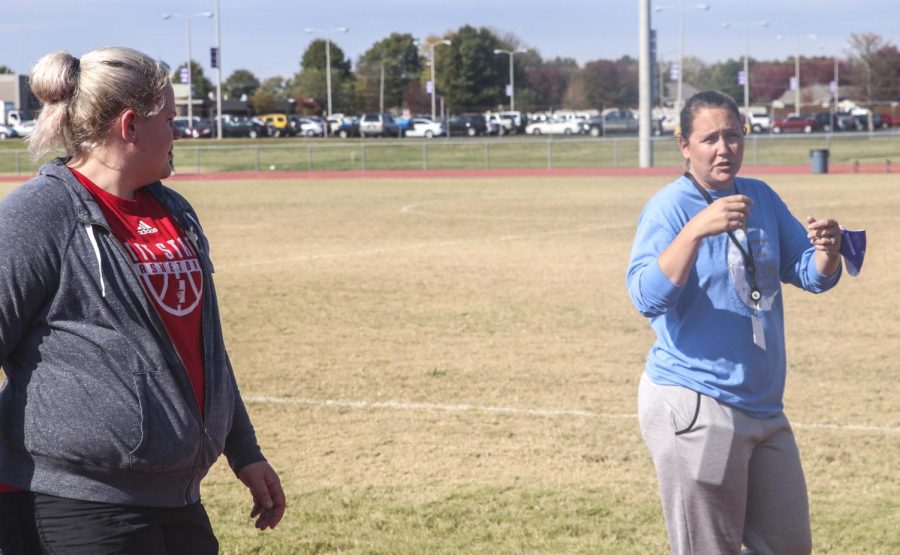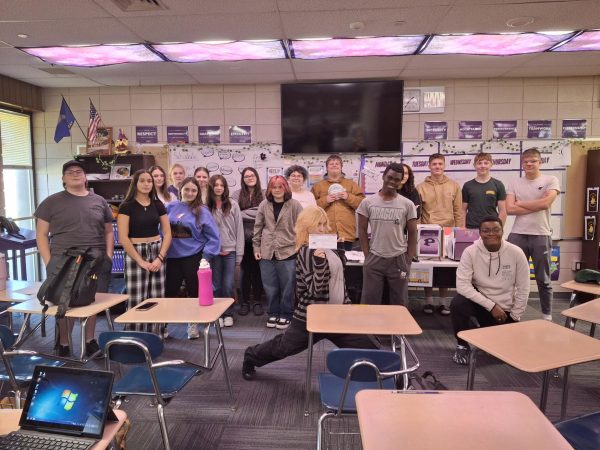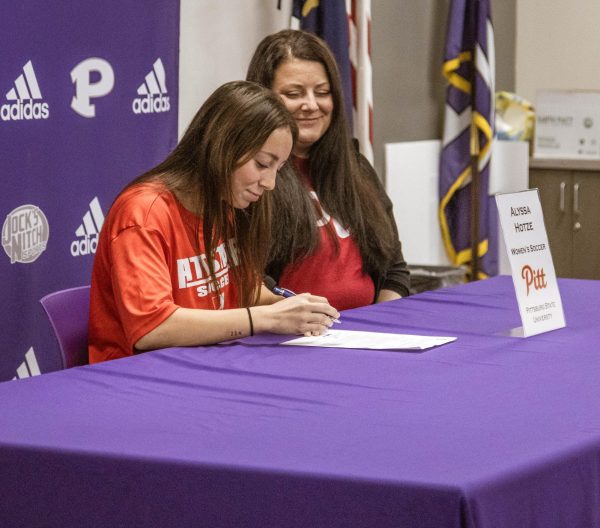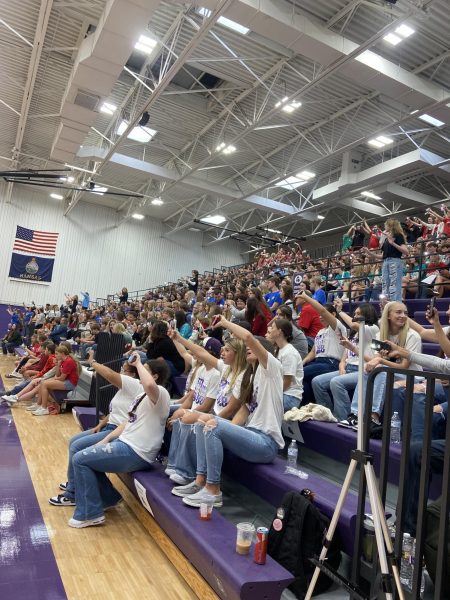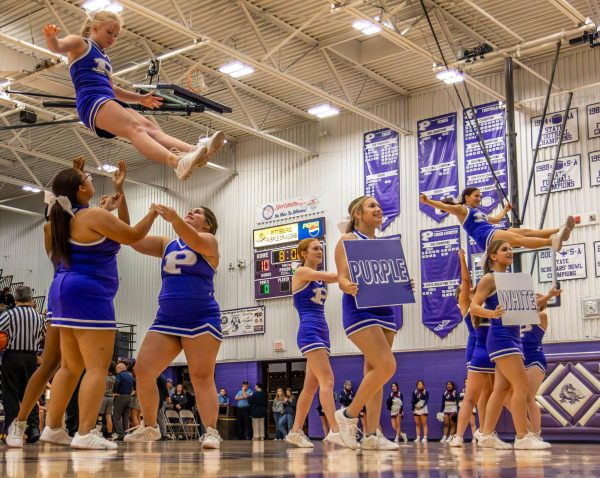Remote learners face Powerwalking challenges
Photo by: Francisco Castaneda
While all types of teachers have had to adapt their classrooms to make room for remote learners, some have had to make bigger changes than others. Physical Education teacher Bridgett Lancaster’s power walking class has had to make accommodations for the challenges that come with teaching a PE class remotely.
While all types of teachers have had to adapt their classrooms to make room for remote learners, some have had to make bigger changes than others. Physical Education teacher Bridgett Lancaster’s power walking class has had to make accommodations for the challenges that come with teaching a PE class remotely.
“We’re not using the locker rooms to change out,” Lancaster said. “When we go outside, we walk a mile, but we don’t do anything vigorous like we’ve done in the past. We used to do air squats and lunges- something to keep us going. That’s completely different.”
The additional aerobics exercises that used to be a staple of power walking aren’t ideal for the remote learners. There’s no way to ensure that they’re doing the exercises, making grading difficult. In order to give them any grade at all, they must submit proof of their walking.
“It’s on good faith,” Lancaster said. “They have to send in a video of their heart rate, how long they walked, and how far. A lot of them will send part of their last minute of their walking. A lot of them are walking their dogs or walking around the park.”
Lancaster said she has a large amount of students in her classes that are remote. In her sixth hour alone, she has 19 people online.
“The thing I really enjoy about walking is the great conversations you can have with the kids,” Lancaster said. “I wish I had more interaction with my remote kids.”
For some of these such students, finding ways to walk at home, if at all, can prove difficult.
“We have a lot of kids, and this has just come to my attention recently,” Lancaster said. “That don’t live in a safe neighborhood. They cannot walk outside by themselves.”
For junior Emily Schneider, it’s almost impossible to walk without her older brother as protection.
“I walk with my brother when he feels up to it,” Schneider said. “My dad doesn’t let me walk alone because of a creepy guy that moved in next door.”
To avoid what could possibly be an unsafe environment, Schneider and her brother walk towards 4th street and away from the area. On days her brother isn’t available, Schneider doesn’t walk at all. Instead, she uses the time to do homework for other classes or does one of the provided at-home workout videos on Canvas.
Junior remote-learner Dallas Smith finds that he shares the same safety concerns.
“As a minority in a mostly Republican town, walking around may be a danger to me personally,” Smith said.
He chooses to stay inside and participate in the class by following along with instructional videos put on Canvas by Lancaster as best he can.
“You can never quite be certain if you’re doing things correctly… or if you’re exercising in the right way,” Smith said. “Remote learning is flawed, especially in the case of Physical Education. There’s no good way to police it.”
Through the ups and downs of accommodating all types of learners and their ability to participate, Lancaster feels that one good thing can be found among the difficult.
“I feel like the teachers have more of a ‘we’re at we’re all in this together’ [attitude],” Lancaster said.
From quick canvas tutorials to troubleshooting, Lancaster feels that this year, more than ever, she can rely on her fellow staff members.
“I feel like there’s so much more camaraderie,” Lancaster said. “Everybody’s kind of helping each other out.”
Your donation will support the student journalists of Pittsburg High School - KS. Your contribution will allow us to purchase equipment and cover our annual website hosting costs.

Ashlan Brooks is a senior and has been on staff for four years. She is the president of French Club, holds officer positions in NHS and Sustainability...

This is Francisco’s third year being involved with photojournalism and his first part of being involved in yearbook. Francisco is also involved in Key...


